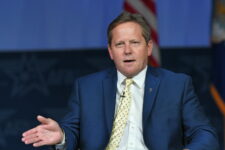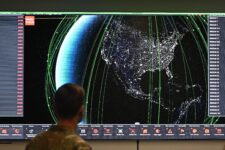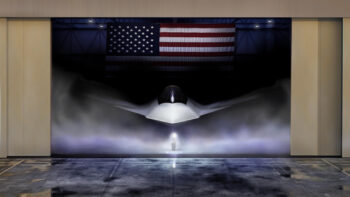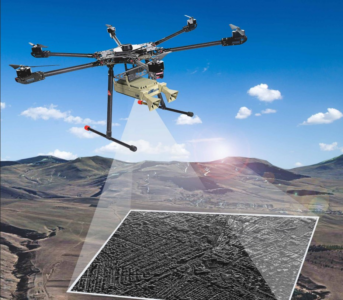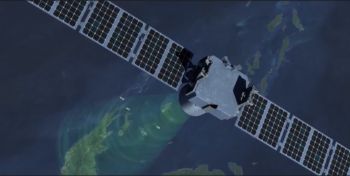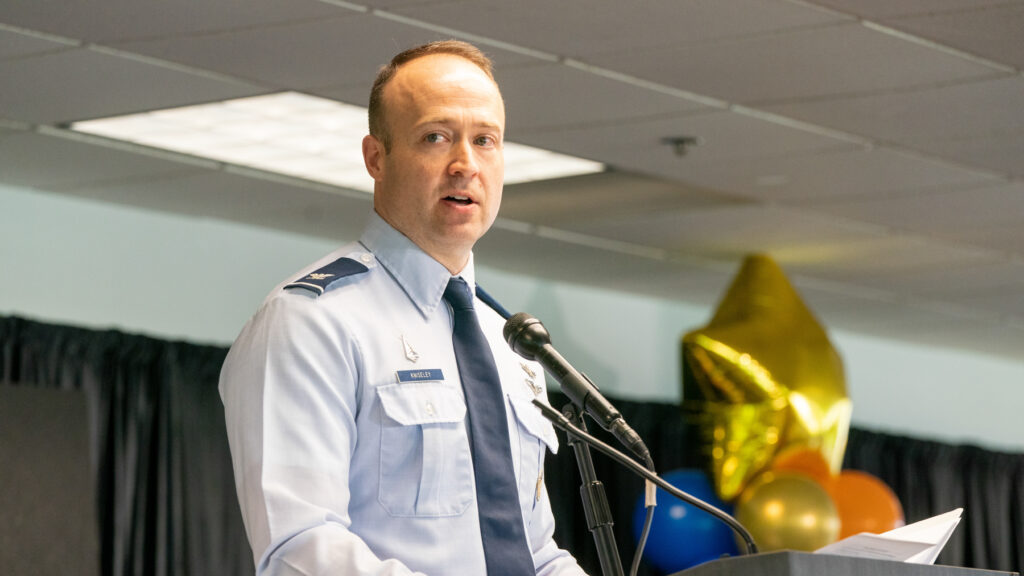
Col. Rich Kniseley, head of Space Systems Command’s Commercial Space Office. (US Air Force photo by Cherie Cullen)
WASHINGTON — The Space Force’s acquisition command plans to release “within a couple weeks” a draft “framework” for how commercial satellite services could be called up in times of crisis or conflict to support military missions for industry feedback — with an official “industry day” to discuss it planned for sometime next month, according to an officials involved.
The framework for what the service calls a “Commercial Augmentation Space Reserve,” or “CASR,” is being drafted by Space Systems Command’s recently revamped Commercial Space Office (COMSO). The Space Force is looking to flesh out a space parallel to the existing Air Force and Navy civil reserve fleets, which allow those services to call up non-military planes and ships in times of need.
The COMSO team, which includes commercial contractors as support staff, held an initial round of meetings with industry and representatives of other government agencies in February. The next step is an official request for information (RFI) asking industry to comment on the draft framework.
“When I say draft, I mean draft,” Intervallo’s Jen Ross, who supports COMSO, told Breaking Defense Tuesday at the grand opening of COMSO’s new office space in Chantilly, Va. “Then we’re going to ask industry: ‘Does this make sense? What changes need to be made?’ And while we’re doing that, we’re simultaneously going to work with some of our government colleagues [and ask them] to tell us how to tweak it.”
Col. Rich Kniseley, head of Space Systems Command’s Commercial Space Office, told the Tuesday crowd, largely comprising industry representatives, that COSMO will hold another industry day sometime in July to allow feedback on the draft framework, then push it up the chain of command to Air Force Secretary Frank Kendall for coordination and approval. (The Space Force is nested under the Department of the Air Force, like the Marine Corps is under the Navy.)
“This summer we’re building a road map for CASR, and anticipate to staff it through the SecAF by the end of the summer,” he said. “But our charge to industry is that next month, we will hold another CASR industry day to get feedback on this framework. This is a partnership with industry, and we need to make sure that you’re excited to be on board with us.”
Kniseley added that the CASR framework further is “being nested alongside the Space Force’s commercial strategy” that has been drafted by the office of Lt. Gen. Deanna Burt, deputy chief of space operations, as well as the Space Acquisition and Integration Office led by Frank Calvelli.
And while he didn’t mention it, the National Space Council’s User Advisory Group also is considering how it might help the Space Force, as well as the National Reconnaissance Office responsible for America’s spy satellites, make better use of commercial capabilities.
The initial CASR framework covers SSC’s plan for establishing commercial satellite communications (SATCOM) “reserves,” as a pathfinder to mapping out how to craft reserve capabilities for other space missions — missions that Kniseley told Breaking Defense in April could require significantly different approaches.
The Defense Department uses different space assets for a plethora of missions, from SATCOM, to intelligence, surveillance and reconnaissance (ISR) to missile warning/tracking to keeping an eye on what is going on in space itself (i.e., space domain awareness). And of course, the Space Force also is increasingly reliant on commercial SATCOM, launch and commercial remote sensing imagery, meaning some of the industry assets that on paper could be called up under CASR might already be in play.
For example, commercial SATCOM and imagery from US companies is playing a foundational role in support of Ukraine in its battle to repel Russia’s invasion launched last February.
German space commander’s ‘Christmas wish’? Satellites with EW-infused defenses
There is “no point in writing papers for three years, developing the satellite for five years, launching old stuff into the orbit, which would stay there for another 10 years,” said Maj. Gen. Michael Traut, Commander of German Space Command
In fact, the Pentagon just last week settled a months-long spat with mercurial SpaceX founder Elon Musk over payments for Starlink SATCOM terminals up to now being provided to Ukraine for free. As first reported by Bloomberg, neither DoD or the company would release the terms of the accord, but the funds likely are to come from the Ukraine Security Assistance Initiative.
“The capacity needed during times of crisis or conflict will exceed our steady state peacetime demand,” Kniseley explained on Tuesday.

